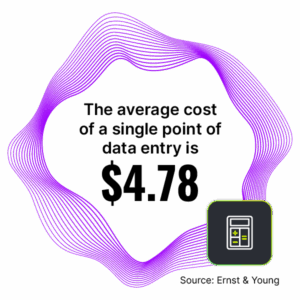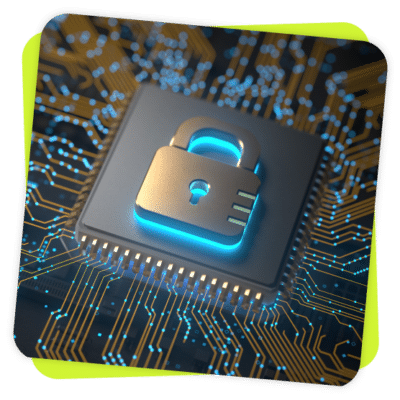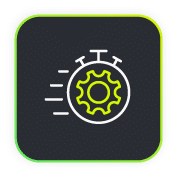HR Process Automation: 6 Workflows to Automate Today
Discover which HR processes you can automate today to save time and cut costs.
How many times a day do you find yourself getting bogged down in manual administrative tasks? The cost of all those clicks can add up fast. In fact, Ernst & Young estimates the average cost of a single point of data entry to be $4.78.
Here’s the good news: By using HR software with workflow automation, you can get precious time back in your day, reduce errors, and give your employees a much better experience.
In this article, we’ll show you which HR processes can be automated, the benefits you can expect, and how to get started – all without adding complexity to your HR tech stack.

TL;DR: What You’ll Learn
- Manual HR tasks are more expensive than you think, but automation can save you time, reduce errors, and let you focus on the people side of HR.
- Start with onboarding, offboarding, and compliance tracking. Then expand into performance management and training.
- Expect benefits like faster processes, better compliance, more engagement, and lower costs.
6 HR Processes You Should Automate
If you think of HR as a blend of art and science, then automation can help you perfect the science side of the house. Here are some of the most impactful places to start.
1. Employee Onboarding
Onboarding is a make-or-break moment in your new hire experience, and yet Gallup data shows only 12% of employees say their organization does a great job with onboarding. A disjointed, manual process delays ramp-up time and can leave new hires feeling disillusioned. By automating key steps in the onboarding process, each new hire gets a consistent and engaging welcome, while their manager stays on track with timely reminders and tasks. With HR workflow software like Rival Recruit and Rival Workflow, you can easily personalize onboarding journeys, automate manager prompts, and deliver a smoother experience from day one. And with dynamic HR templates, you can easily generate, update, and send documents, such as offer letters, in seconds.
2. Offboarding and Exit Management
A smooth exit process is critical for two reasons. One, your employee leaves with a strong last impression, leaving the door open for a possible return or a referral from their network. Second, a solid process ensures you adhere to compliance and safety protocols with every exit. If you’re relying on manual checklists to manage your offboarding process, you’re exposing your business to significant risk. By automating offboarding with a tool like Rival Workflow, steps like collecting equipment, revoking access, and sharing exit surveys don’t fall through the cracks.
3. Performance Reviews and Feedback Cycles
Annual reviews and regular feedback cycles are essential HR processes but often fall to the bottom of a manager’s to-do list. Automation with a tool like Rival Perform can help managers stay accountable with reminders and prompts that ensure employees feel supported with timely, constructive feedback.
4. Compliance and Policy Acknowledgements
Need to communicate about a new safety guideline or an updated code of conduct? Automation makes acknowledgements a breeze by sending notifications to employees, tracking completions, and storing records for compliance audits.
5. Training and Certification Tracking
If you’re in an industry that requires ongoing training or certification, tracking progress manually can be a logistical mess. Tap into automation with a tool like Rival Learn so you can stay compliant and give managers visibility into who’s completed what.
6. Employee Data Updates and Record Management
Employees’ personal details like addresses, bank info, or emergency contacts are always changing. You can automate these updates through self-service portals to ensure accuracy, reduce admin time, and keep your records current across systems.
Benefits of Automating HR Processes
Using automation can transform the way your team works in a really positive way. Here are some of the top benefits you can expect to see once you set up automated HR processes.
How to Automate Your HR Processes
Here we’ll show you how to identify the right opportunities, roll them out smoothly, and ensure adoption across your organization.
1. Identify repetitive and manual HR tasks
Which tasks take up the most time? Which tasks are prone to error? Think onboarding checklists, policy acknowledgements, or performance review reminders.
2. Prioritize workflows with the biggest impact.
You don’t have to automate everything all at once (and we wouldn’t recommend that). Start with the process that’s currently taking up the most time on your team.
3. Choose the right HR automation platform.
Look for a solution that’s flexible enough to handle multiple HR processes but simple enough for your team to use without the need for heavy IT support. Even if you operate within complex employee regulations, the right tool will be able to automate that process end to end.
4. Map out processes and set clear goals.
Outline what the current journey looks like. What are the steps? Who is involved? Then decide which metrics to track success, such as reducing errors or cutting down approval times.
5. Ensure data security and compliance.
Choose an automation tool that integrates with your existing HR systems, meets compliance standards, and protects employee data.
6. Pilot with one workflow before scaling.
Start with a single process like onboarding and gather feedback, measure results, and refine before rolling it out more broadly.
7. Train HR team and employees for adoption.
The best measure of success for a new process is user adoption. Be sure to provide appropriate training to employees and managers so they know what to expect.
8. Measure results and continuously improve.
Remember the metrics you chose in step four? Keep track of how they’re changing over time and use these insights to improve workflows and expand automation into new areas.
How Rival Workflow Helps HR Teams Automate Smarter
Remember the ultimate goal of automating your HR processes is to spend less time on administrative tasks and more time focused on strategic work. With Rival as your partner, you can better support your people and drive business results.
Using Rival Workflow you can:
- Orchestrate end-to-end employee journeys with dynamic templates and automation.
- Eliminate manual checklists by guiding managers and employees with timely prompts.
- Integrate seamlessly with your existing HR systems to keep data secure and up to date.
Ready to see how Rival can help your team automate smarter? Explore Rival Workflow now!





















